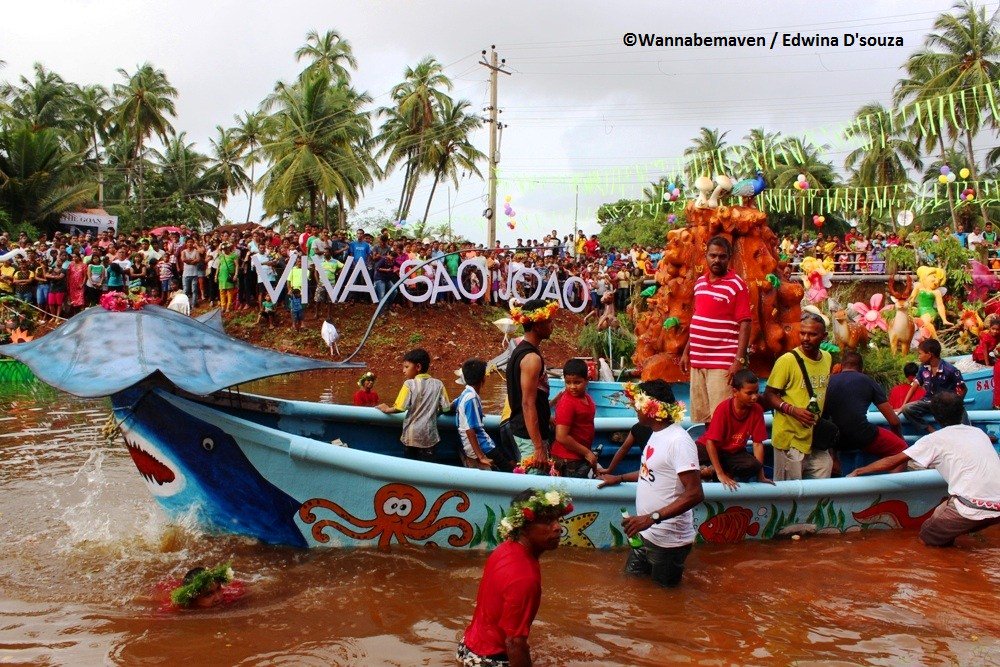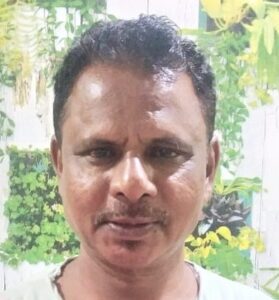`Sao Joao’ Festival On June 24 In Goa Is Most Unique

Camil Parkhe
Pune, 23rd June 2021: On June 24 every year, there is a festive atmosphere in Goa, especially in some villages in North Goa. That is because the Sao Joao festival is celebrated on this day, June 24.
This is the time when after the onset of the Monsoon, streams overflow with water, lakes get filled with water and waterfalls come alive in the hilly areas in Goa. The lush greenery in Goa this time is breathtaking.
The Sao Joao festival celebrated on June 24 is in a way a festival of fertility in Mother Nature. The festival as it is related to the Christian calendar also commemorates Biblical incidents connected to two famous nativities, the nativity of St. John the Baptist and the Nativity of his close relative who is none other than Jesus Christ, his birth now celebrated all over the world as the Christmas.
I vividly remember the days when as a higher secondary student in the 1970s, I visited a village near Mapusa in Bardez taluka, to spend holidays with my friends during the monsoon days. I would not like to reveal the name of the village for the fear of exposing it to the threat of visiting tourists. The place where we landed for the picnic was at the foot of a hillock. Water crashed from the hilltop as we joyously soaked ourselves on the rocky ground. Even then it was an understanding among all of us gathered there that we would not reveal the name of our picnic site to anyone else, a promise I have kept for four decades up to this date.
So, the Monsoon season or the days immediately after that are the best days to visit Goa. By June end, the tiny state of Goa is filled with water and this sets the stage for the celebration of Sao Joao fest or festival.
Sao Joao in Portuguese and Konkani means St John the Baptist, a relative and contemporary of Jesus Christ. On this days, the revellers – the youth and others – move in procession to the tune of traditional musical instruments including the ghumat to nearby water bodies – well, overflowing streams, lakes and rivers. There, shouting `Sao Joao’, the revellers jump into the wells or the lakes.
The Sao Joao festival is celebrated on the occasion of the feast of St. John the Baptist which falls on June 24. The Catholic Church has its calendar of feasts of various saints and various seasons like Advent, Lent, Christmas, etc.
The Sao Joao festival celebrations – the jumping into the well and other water bodies – is related to an incident mentioned in the Bible. This refers to the meeting of Mother Mary who was pregnant with Jesus Christ and her elderly relative, Elizabeth who was pregnant with St. John the Baptist.
St. John the Baptist is an important figure in the New Testament of the Bible. It was St. John the Baptist who baptised Jesus Christ with water in the Jordan River. After this baptism, Jesus launches his mission of preaching to the people. St. John the Baptist is also among the first martyrs in the New Testament.
One needs to know the sequence narrated in the St. Luke’s Gospel in the Bible to understand the Sao Joao festivities in Goa.
Archangel Gabriel appeared before Mary with a message that she will be conceived with the power of the Holy Spirit and the baby will be named Jesus.
In the same appearance, the angel also told Mary that her relative, Elizabeth – although very old- had also conceived six months back.
As per St. Luke’s account, the story goes thus:
‘’Soon afterwards, Mary got ready and hurried off to a town in the hill-country of Judea. She went into Zechariah’s house and greeted Elizabeth. When Elizabeth heard Mary’s greetings, the baby moved within her. Elizabeth was filled with the Holy Spirit and said in a loud voice: You are the most blessed woman in the world and blessed is the child you will bear. Why should this great thing happen to me, that my Lord’s mother comes to visit me? For as soon as I heard your greeting, the baby within me jumped with gladness.‘’
The Sao Joao festival celebration revolves around this theme of the ‘Baby (St John the Baptist) in the womb jumping with gladness.’
Incidentally, it is only in Goa that the feast of St. John the Baptist or the Sao Joao festival is celebrated in this manner.
Carnival celebrated in February-March in Goa in India, and also in Portugal, Spain in Europe and various countries in Latin America, is another festival linked to the Church’s annual calendar. The Carnival celebration which consists of King Momo leading his team of revellers starts on Saturday, preceding Ash Wednesday marking the beginning of the 40-day Lent or fasting Season. The Church however has long ago disassociated itself from the Carnival festivities described as not in keeping with Christian values.
The prevailing Covid-19 situation in Goa this year has indeed dampened the spirit of the Sao Joao festival revellers for the second consecutive year. The festival will be celebrated with a limited number of participants and with the observation of the pandemic regulations.
Veteran artist and cartoonist Mario Miranda who hailed from Loutolim village in south Goa has drawn numerous pictures related to Goan culture. One of his famous paintings is based on Sao Joao festival and truly describes the spirit behind this unique celebration.
Exactly six months after the June 24 Sao Joao festival, follows the celebration of the Nativity of Jesus Christ, the Christmas festival, on December 24th at midnight.

(Camil Parkhe is a senior journalist based in Pune. He started his journalism career in Goa and has worked in various newspapers in different capacities.)
Follow Punekar News:





